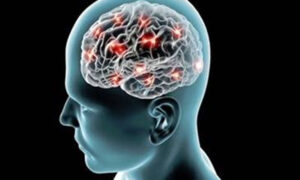Welcoming the decline in India’s child mortality rate between 1990 and 2019, healthcare experts have advised that the number can be further brought down by providing quality essential health and nutrition services to every newborn.
India’s child mortality rate has declined substantially between 1990 and 2019, according to a new UN report. The country registered a 4.5 per cent annual rate of reduction in under-five mortality between 1990-2019. The number of under-five deaths in 1990 to 8,24,000 in 2019.
The infant mortality rate (deaths per 1,000 live births) in India declined from 89 in 1990 to 28 last year, with the country registering 6,79,000 infant deaths last year, a significant decline from 2.4 million infant deaths in 1990.
The country also witnessed a decrease in neonatal mortality rate between 1990 and 2019 from 57 to 22 – 1.5 million neonatal deaths in 1990 to 5,22,000 deaths in 2019.
Healthcare experts have welcomed the drop, attributing it to political will and commitment and evidence based policy and programming decisions prioritising newborn and child health.
Sujeet Ranjan, executive director at Coalition for Food and Nutrition Security (CFNS) said although the global number of newborn deaths declined from 5 million in 1990 to 2.4 million in 2019, children face the greatest risk of death in the first 28 days of life.
“Protecting the progress made on nutrition in India will, therefore, require continued leadership, attention, financing and commitment at all levels and across society,” Ranjan said.
“There is no time to lose because women are pregnant today, babies are being born every single day and many more, including adolescents, are in sensitive periods of physical and mental development,” Ranjan said.
Noting that Covid-19 is likely to be there for a long time, he said a plan needs to be made keeping that in mind.
“Improving the quality of foods, feeding practices, and the nutrition situation of children in the first two years of life, represent a critical window of opportunity to break the inter-generational cycle of malnutrition,” he said.
If this critical opportunity is missed, child malnutrition will continue to self-perpetuate, malnourished girls will become malnourished women, who give birth to low birth weight infants, who suffer from poor nutrition in the first two years of life, he added.
“The best opportunity to break this vicious inter-generational cycle is to concentrate efforts on improving the nutrition of infants and young children from conception through the first two years of life,” Ranjan said.
Ketan Bharadva, president at Infant Young Child Feeding (IYCF) Chapter of Indian Academy of Paediatrics, said at present, India has the largest population of children (less than 14 years) worldwide which is a factor in large number of mortality figure as proportions of world wide figures comparison.
“Focus on child health prior to the eighties was mainly on infectious diseases, particularly the vaccine preventable diseases (like tuberculosis, polio, measles); diarrhea and malnutrition. With improving medical care, vaccine coverage, sanitation,, potable water the childhood infections are reducing remarkably in the last two decades,” he said.
Bharadva said malnutrition in children is a well known risk factor for many diseases such as diarrhea, measles, pneumonia, HIV, tuberculosis, and malaria.
“It was a major contributor to mortality in children less than 5 years of age in every state of India in 2017, accounting for 68 per cent deaths. Still it remains a big challenge. Awareness on nutrition, education, supportive programmes to promote breastfeeding and complementary feeding are the key to tackling malnutrition,” Bharadva said.
Sebanti Ghosh, country programme director at Alive and Thrive said neonatal mortality was a key contributor to the child mortality.
India prioritised delivery of quality care at birth in public health facilities, early essential newborn care including home based newborn care through ASHA workers and multi-tiered facility based newborn care including state of the art care at Sick Newborn Care Units in the public health system to address the needs of preterm/low birth weight and sick neonates, Ghosh said.
The current progress in decline has to be consolidated while accelerating the coverage of essential newborn and child health and nutrition services at scale with quality and in equitable manner through both home/community based platforms and facility based platforms, Ghosh said.
“The interstate and intra-state disparities along with socio-cultural and economic inequities must be addressed in ensuring reach of all the essential health & nutrition services with quality to every newborn,” Ghosh said.




























 WhatsApp us
WhatsApp us
Pingback: Online medicatie kopen zonder recept bij het beste Benu apotheek alternatief in Amsterdam Rotterdam Utrecht Den Haag Eindhoven Groningen Tilburg Almere Breda Nijmegen Noord-Holland Zuid-Holland Noord-Brabant Limburg Zeeland Online medicatie kopen zonder r
Pingback: web
Pingback: home mortgage
Pingback: Trust Bet